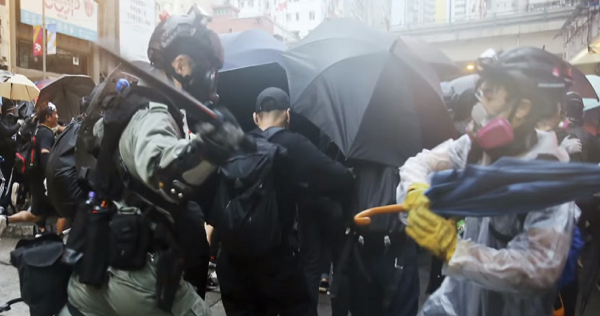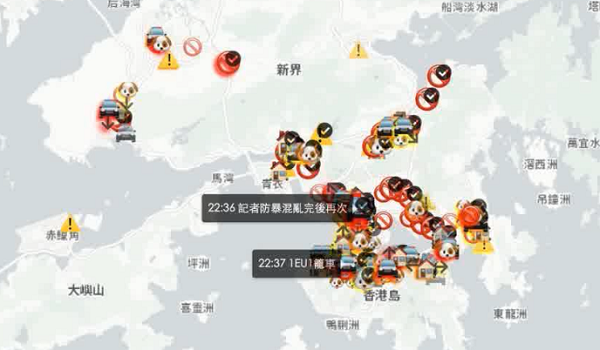
Amid the tear gas haze and confusion of the crises in Hong Kong, things are overwhelmingly clear.
If Beijing is certainly the heart of the temperamental dragon where almost anything is possible under the watchful eye of god, then Hong Kong represents the industrious and powerfully steady mitochondria of the beast, facilitating the empire in brash decadence. As the UK inexplicably abandoned the prosperous colony of hybrid Capitalism in 1997, and left the future susceptible to the ambiguous pretense of Deng’s “one country, two systems” policy of bureaucratic horrors, it was only a matter of time before the obligatory impasse between economic philosophies resulted directly from the eternal attrition and corruption of Communism infested with oligarchs. And that time is now, as the chaos and militant dissent from the streets collides with technology in a battle that transcends the senses. Hong Kong maintains some of the strictest gun control laws on the planet, and most of the firearms are throughout the administrative district are in the possession of cops and military, citizens are at a natural disadvantage, especially in an uprising.
As the capital fired the initial blow in the hyper-surveillance of citizens both on the main land and in Hong Kong by deploying hundreds of millions of cutting-edge facial recognition HD spy cameras, it is poetic justice that software and app developers have joined the fray by offering both tools and hope to protesters striving to remove the shackles of an exploitative government. With the street violence only escalating and the unrest virtually affecting every resident, an app is now available at the Apple store, which gives individuals a live map as to the updated location of clashes between protesters and law enforcement personnel. The availability of the tool, which can be downloaded to smartphones and devices, creates an interesting phenomenon amid the ugliness and the inhumanity of the raw violence. In a heavy weight match-up between the brawn of Chinese state security, and the furtive innovation of software engineers, it call comes down to who has access to the best data.
Disappointingly, after the app, HKmap, was originally released last week for download, Apple decided to take the product down, citing concerns that it was possibly promoting illegal activities. Fortunately, someone on the board of the digital giant talked sense into the ears of the decision makers, and HKmap is conveniently accessible here.

HKmap provides the end-user with a live interactive map of places to avoid or places to congregate.
From a technological aspect, the app is fascinating, as the data tracking the interaction between police and protesters can be processed in learning and identifying trends in scenarios that would be previously dismissed as chaos. The potential to interface with the legal channel will be a conversation of note, as both prosecutors and individuals claiming foul play from law enforcement await how the data can be fit into the context of a lawsuit. China predictably utilizes images taken from the cameras as hard evidence for sentencing to the fate of hard labor camps or worse, and any inclination of balance in the Communist nightmare is a rare positive and ray of sunshine illuminating individuality.
Turnabout is fair play, and any instance where the spy can be spied upon, should be embraced. As Hong Kong residents continue to fight for freedoms on all levels, after enduring two decades of putrid and regressive Chinese leadership, any help that they receive from outside sources only increases the slim chances of becoming a separate entity worthy of recognition beyond a cellular level, as the mighty and belligerent dragon dabbles in perpetual derision.
It is enlightening to see that the original environment of deregulation planned for the internet still applies in some cases, and gives the advantage to the individual over an organization.
This editorial is powered by Duckduckgo.com